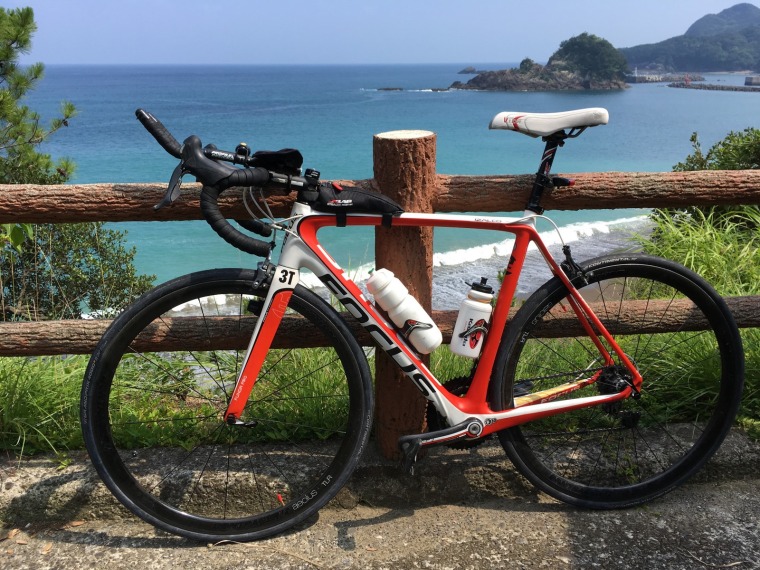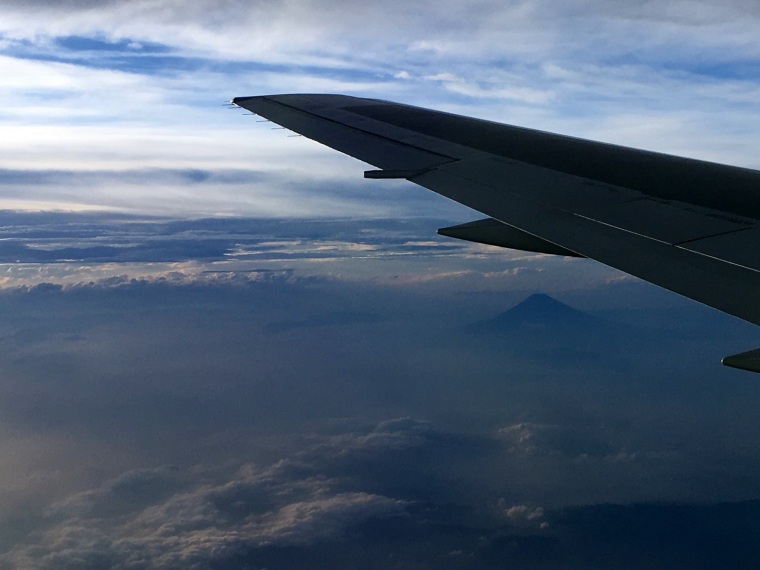
This was my third year in a row doing the Toyama Iki Iki race, and each time the course has been a little different. This year, the bike course reverted to the 2015 course, but the run was rather different from the previous two years. What hadn’t changed was the beautiful scenery and the toughness of the race.
David, Thibaut, and I had been exchanging emails for a week about the weather forecast as it evolved from promises of mid-thirties heat, to torrential rain, and everything in between. By Saturday, the swim was in doubt due to rough seas, the bike course had been changed a little due to rock falls, and we were promised rain for at least part of the race. Sunday brought a mild day with light breezes, and the sun hidden safely behind clouds. We couldn’t have hoped for better weather, which just goes to show there is not much point worrying too much about things you have no control over.
For Thibaut, the race very nearly didn’t happen at all, as his name did not appear on the start list. After much persuasion, the JTU marvellously decided to create an “Open” category with just one athlete. It will probably be the only triathlon in which Thibaut simultaneously comes first and last.
As with previous years, the logistics seemed rather complicated, as you have to register at the Keirin cycle race track before checking in your bike a kilometre away by the sea, and then return on foot to the Keirin track for the race briefing. After the briefing of 2015, at which we sat on blue tarps in the freshly hosed-down fish market, and the 2016 version in the baking-hot stands of the Keirin track, 2017 found us sitting on the floor of an airless, non-air-conditioned gym, roasting restlessly as the JTU officials used hand-drawn diagrams to explain the intricacies of the race. After this, the race would be a breeze.
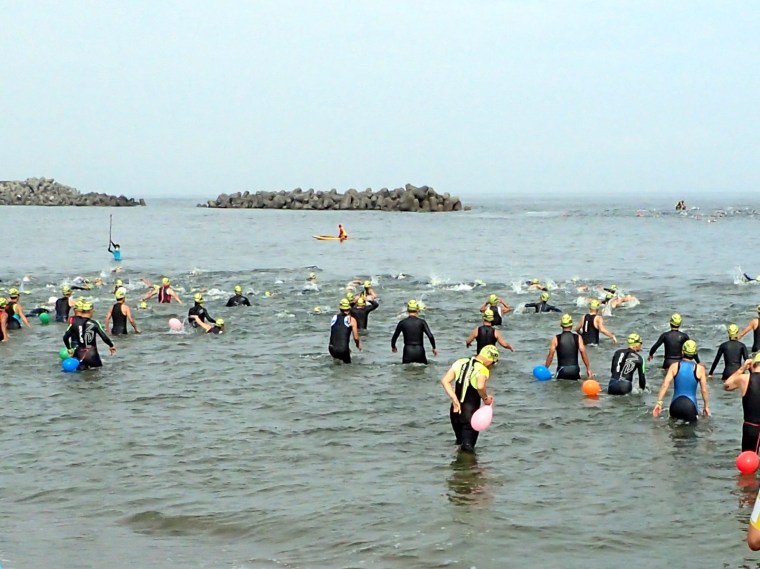 Wave 3 gets off to a slow start
Wave 3 gets off to a slow start
The race itself went well for all three of us. Thibaut shot off in the first wave and posted a PB in the swim. David and I were in the third wave, and despite setting off from opposite sides of the pack, we soon found ourselves side-by-side as we approached the first buoy. There was a bit of a swell coming towards us, but it was a pretty straightforward swim for me. I came out of the water after the first lap, misread my watch, and thought I had done it in a miraculous ten minutes. Either the course had changed, or I had metamorphosed into a swimmer in the last two weeks. I exited the second lap hoping for a PB, but instead registered a rather disappointing 26:30.
David leads me out of the water by 30 seconds
For the first few kilometres of the bike, you are not supposed to use your aero-bars in three sections. However, it is impossible to know where these sections are, so I just randomly rode on the tops and on the aero-bars until we hit the main river. For the next twenty kilometres, it is a mostly straight ride up the river bank, with an almost imperceptible climb to a hundred metres above sea level. More noticeable was the slight headwind which made me happy to have chosen my TT bike this year. At about the 10-kilometre mark, I passed Misu-san and went into the red for a few minutes to draw away from him.
My TT bike seemed fine on the steep hills, especially as I had put on a 12-30 cassette. The only disadvantage was on the several short, fast, twisting descents which I had to ride cautiously. For the last few kilometres, I eased off in preparation for the run which was sure to be gruelling. I entered T2 at Tateyama Ski Resort and placed my bike in an empty rack. However, as I ran out of transition, I was really surprised to see Misu-san racking up his bike. He must have killed himself on the bike.
Going up, coming down, going around
The outward part of the run course followed that of 2015, but instead of returning to the start on the road, we simply turned around and ran along the path through the forest and back diagonally across the ski slope. On the first brutally steep climb up alongside the piste, Thibaut passed me in the opposite direction, flying back down the slope. I calculated he was about 8 or 9 minutes ahead (minus 6 minutes for his earlier start) so he was also having a great race. I staggered over the first crest, up the next climb, and then picked up a bottle of water at the turnaround. I gulped down a little and then poured the rest over my wilting body. As I ran back down the hill, I passed Misu-san coming up the other way, looking a bit rough at the edges, and then David with a grim look on his face.
Ty lending a hand
The three out-and-back laps allowed Thibaut, David, Misu-san, and I to exchange words of encouragement and share the pain a little. On the second lap, I passed a half-full water bottle to Misu-san who really looked to be suffering. Our positions were decided; we just needed to finish the race and cool down. We also benefitted from the enthusiastic support of Meg, Ty, Miki, and Anne, especially Anne who was screaming encouragement at the start of each new lap.
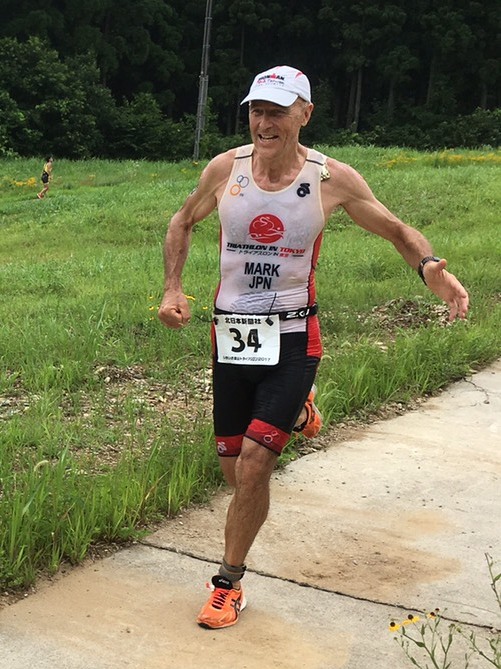 Letting gravity do the work
Letting gravity do the work
I crossed the finish line in 2:25:49, which doesn’t really have much meaning as the bike is only 37 km, and the run 9 km. Thibaut posted a brilliant 2:23:27, which put him in 8th place overall. Misu-san came in next and David leapt across the line shortly afterwards. Overall, it was another fine race. The rain held off, and we had plenty of time to relax at the ski resort, eat salmon-trout sushi, and take in the view.
Thibaut, Mark, Misu-san, and David (showing us how to finish in style)
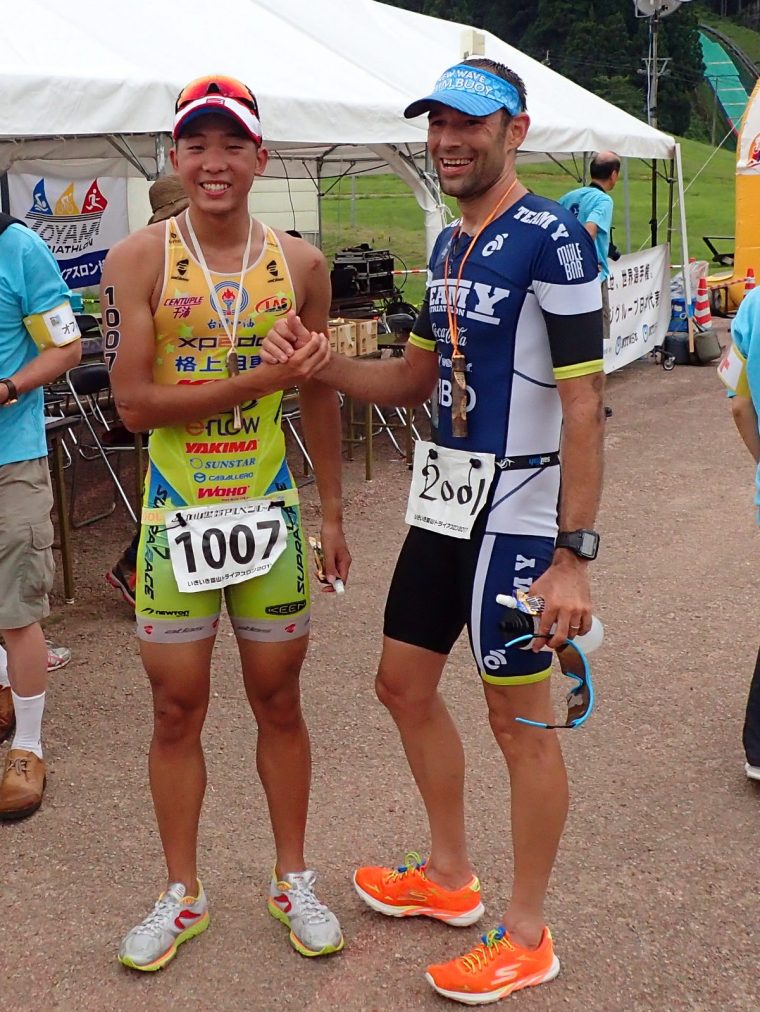 Thibault with 17-year-old star, Chang Chia Hao, who posted the fastest time but was later disqualified for accepting a wheel from his team following a puncture
Thibault with 17-year-old star, Chang Chia Hao, who posted the fastest time but was later disqualified for accepting a wheel from his team following a puncture
 That post-race feeling
That post-race feeling
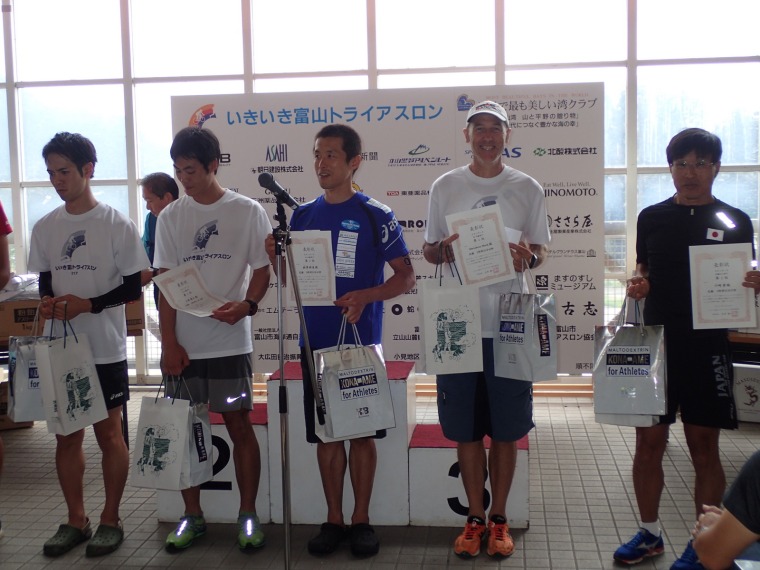 The smile is for the bottle of sake I am holding
The smile is for the bottle of sake I am holding
After the race, we cycled the 30 kilometres back to Toyama, taking in the views we’d missed during the race.
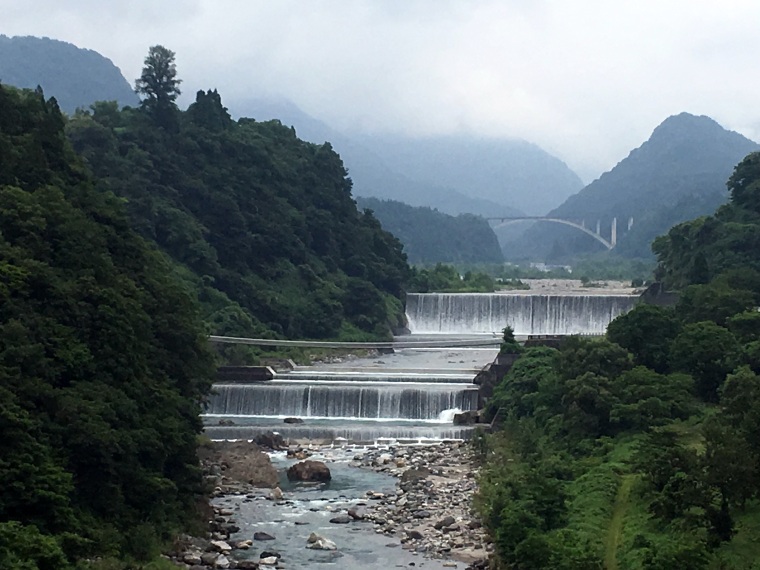 View up the Joganji river from Tateyama Ohashi
View up the Joganji river from Tateyama Ohashi
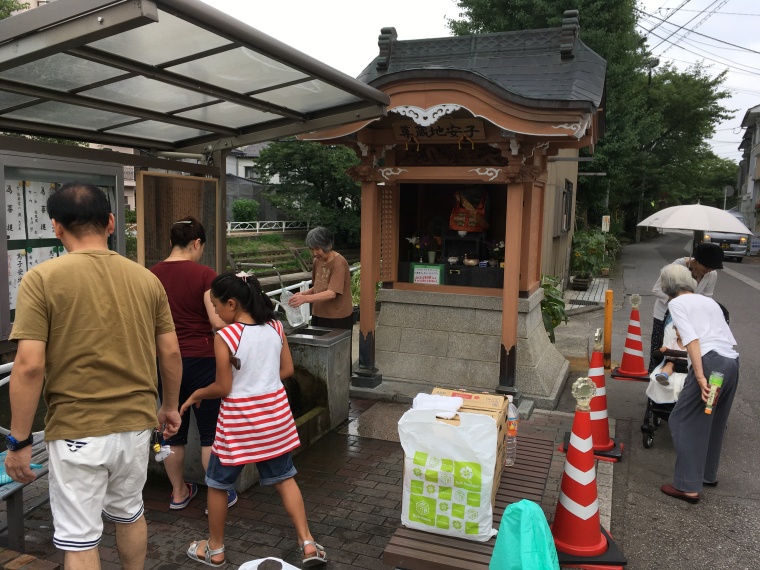 Spring by the Itachigawa near Toyama city centre
Spring by the Itachigawa near Toyama city centre
 We even made front page of the Kita-Nihon Shimbun
We even made front page of the Kita-Nihon Shimbun
In the evening, Miki and I went for sushi at the wonderful Sushi-Ei. We had the Toyama set menu, which for 3,000 yen features a variety of local fish. It is a serious eating place with no alcohol and no smoking. Later, we met David and Ty for Guinness, pool, and darts at the rather pleasant Pot Still bar. A five-year-old and a bucketful of darts; what could possibly go wrong?!
 Rakusuitei house and garden
Rakusuitei house and garden
Miki and I finished off the long weekend with a visit to the truly beautiful Rakusuitei house and museum just a few minutes north of the station. The house and gardens were built just after the Second World War for a wealthy merchant, using the very best wood and stone from around Japan. Each room features spectacular cuts of wood from huge zelkova, hinoki, cedar, and gum trees, and displays of the finest craftsmanship. The gardens have all the usual strolling garden features of ponds and moss and stones and trees, with each section designed to be viewed from a different part of the house. Inside, the house is adorned with graceful pottery, paintings and other Japanese crafts. It was a very relaxing end to a pretty full-on weekend.
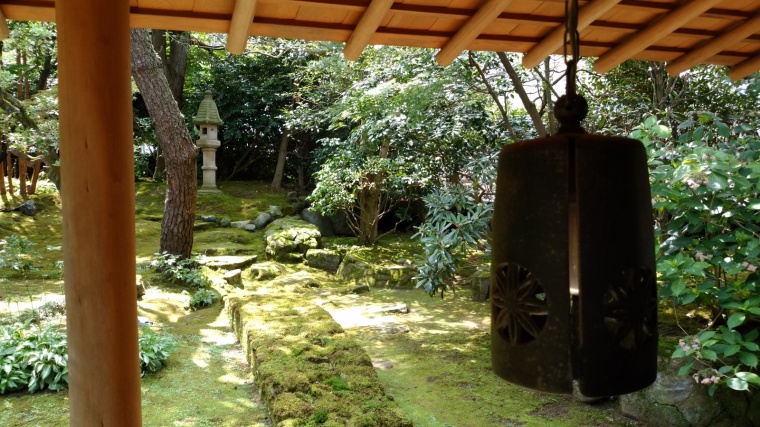
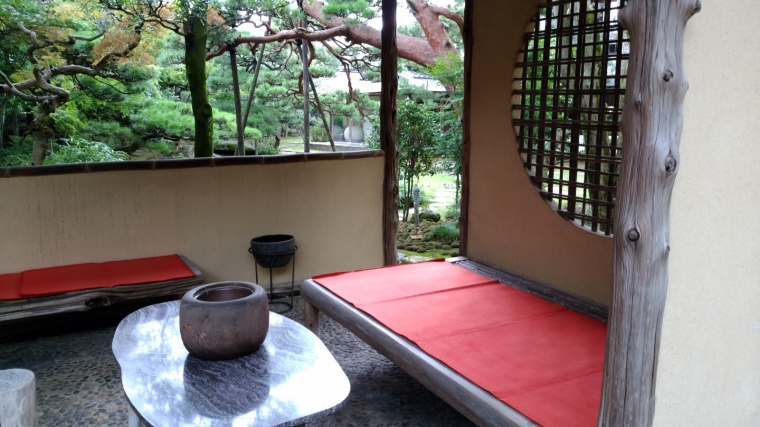 Rakusuitei garden
Rakusuitei garden













 Ebisu Point to the left
Ebisu Point to the left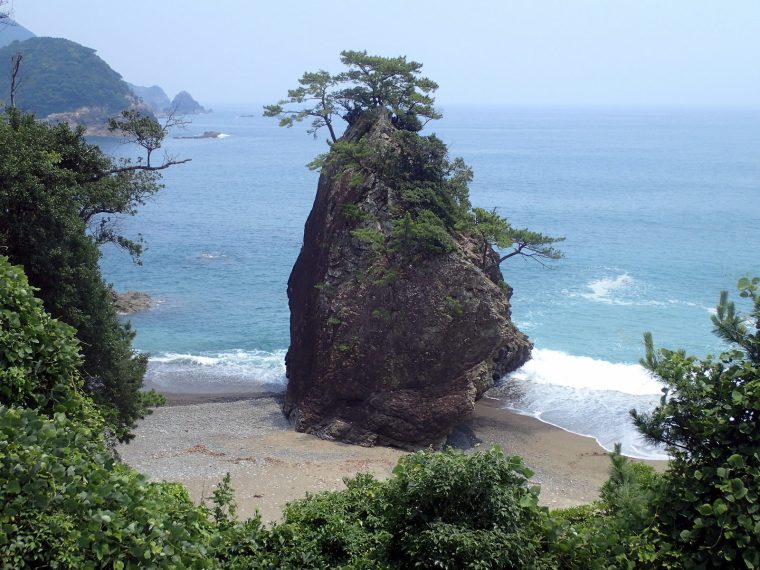
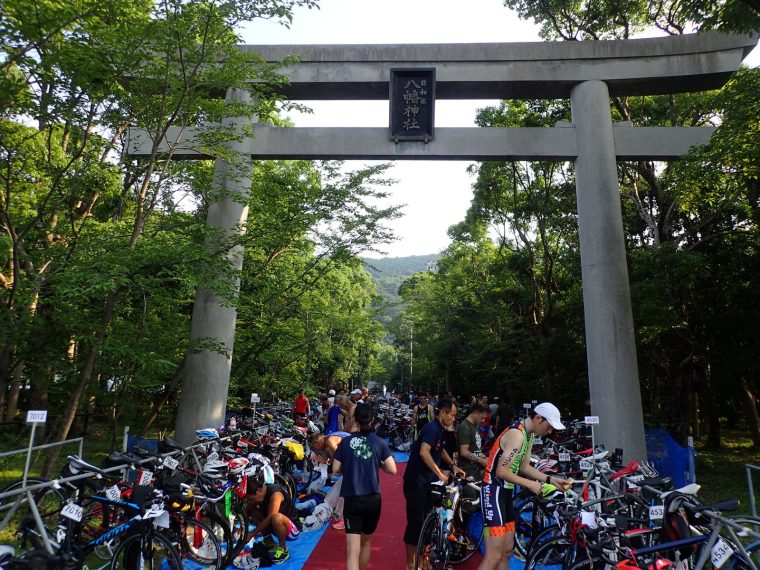
 The start of the first climb
The start of the first climb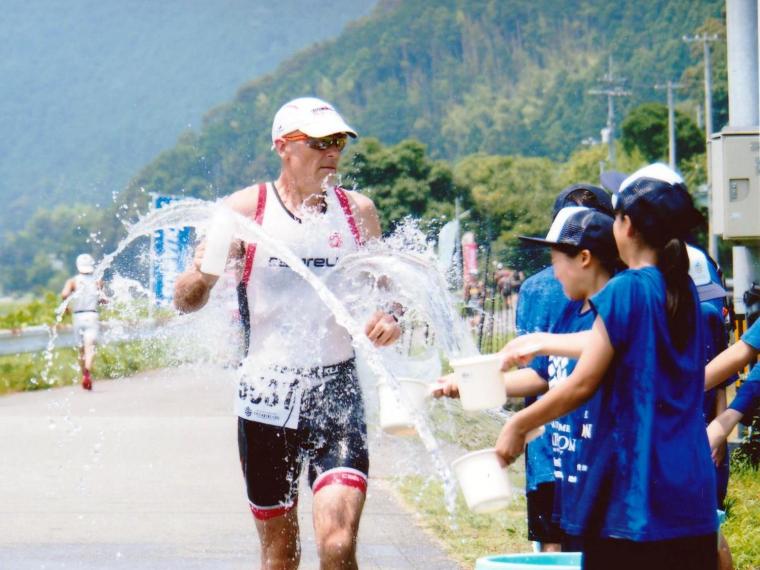 Heaven is a bucket of water
Heaven is a bucket of water
 The finish
The finish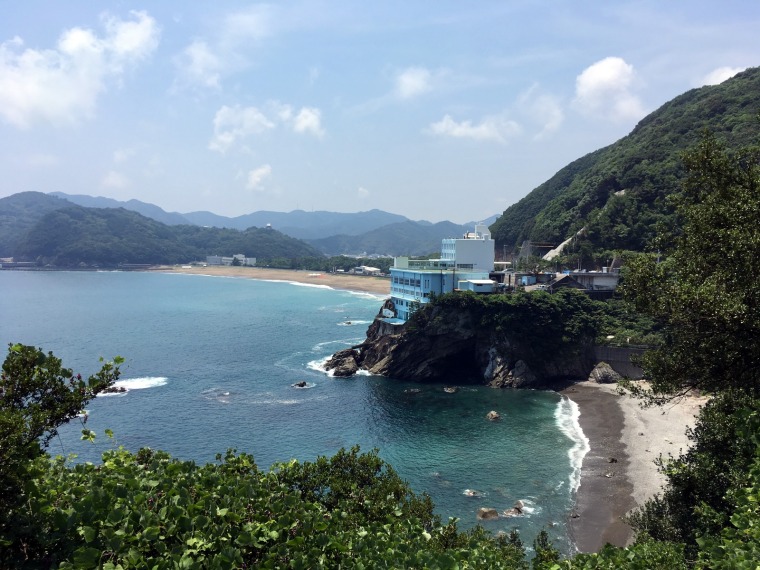 Hotel Shiroi Todai overlooks the bay
Hotel Shiroi Todai overlooks the bay The view from the roof of Hotel Shiroi Todai
The view from the roof of Hotel Shiroi Todai 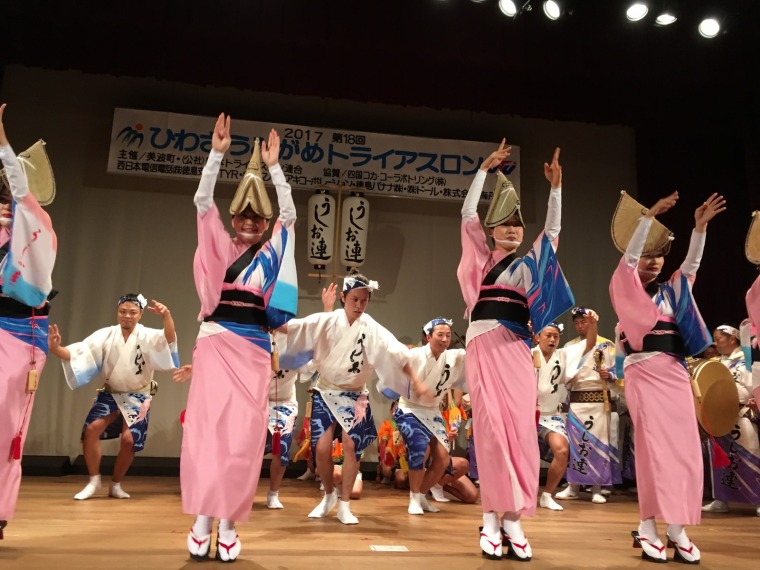 Awa-odori at the opening ceremony
Awa-odori at the opening ceremony 
